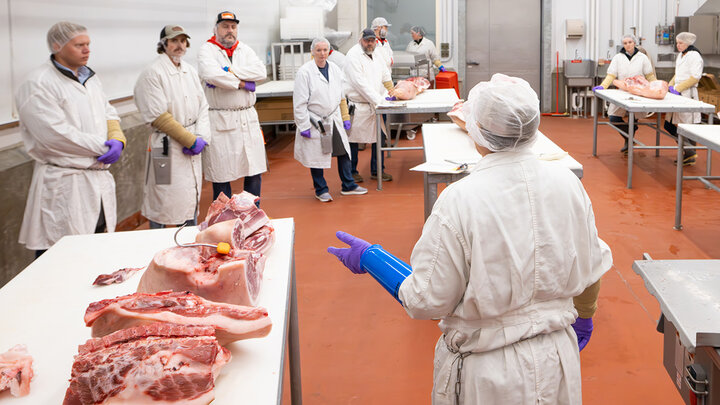Establishing a fair rent for farm buildings and storage facilities involves multiple factors. There isn’t a universal formula, as conditions vary depending on building type, usage, and local market conditions. However, a comprehensive evaluation of both fixed and variable costs, as well as cash and non-cash expenses, is essential.
Fixed Costs
Fixed costs persist whether the facility is in use or not and include:
- Depreciation: Buildings lose value over time, a non-cash cost factored into rent. Depreciation can be calculated by subtracting the building's salvage value from its initial value (excluding land) and dividing it by its estimated useful life.
- Property Taxes: Taxes must be paid regardless of whether the building is in use (cash expense).
- Insurance: Buildings should be insured for liability and physical damages. Insurance is a cash-fixed cost but may vary based on the condition and usage of the building.
- Repairs: While repair costs can vary depending on usage, they are generally considered a cash-fixed cost.
- Interest Costs: Loan interest is a cash-fixed cost if the building is financed. There is also the opportunity cost of ownership (a non-cash cost), which reflects what could be earned if the building were sold and the funds invested elsewhere.
Variable Costs
Variable costs fluctuate based on the building's usage. These are typically cash costs and include:
- Repairs Based on Usage: Higher usage may lead to increased wear and tear, resulting in higher repair costs.
- Insurance: More frequent use could lead to higher insurance premiums.
- Utilities: Utility costs, such as electricity, water, and heating, vary with the intensity of the building's use.
Additional Factors to Consider When Setting Rental Rates
When determining a fair rent, also consider the following:
1. Size: Larger buildings with greater capacity generally command higher rent due to increased utility.
2. Repair Costs: The building's current condition will affect maintenance costs. Consider who will handle repairs, and how security or monitoring of the facility will be managed.
3. Insurance: Depending on the building’s condition, location, and usage, insurance costs could be a significant figure to consider.
4. Condition: Newer, well-maintained buildings may command higher rent than older, deteriorating ones.
5. Location: Proximity to main roads, markets, or infrastructure can increase a building’s desirability and rental rate.
6. Risk of Accidents or Type of Usage: Buildings used for high-risk operations or intensive farming may require higher rent to cover potential liabilities.
7. Other Factors: Noise, odor, and traffic generated by building use can also influence rent, especially if the building is near residential areas.
Example Scenarios
Table 1 provides two examples with outlined building cost figures. The two scenarios are for a farm shed used to store supplies, machinery, and equipment.
- Scenario 1: The shed has a non-depreciated value and an estimated useful life of 20 years. It retains an assessed value and could be sold, with the equity reinvested.
- Scenario 2: The shed is fully depreciated and has no real market value. However, it remains on the tax rolls, is insured mainly for liability, and requires ongoing repairs to remain functional.
Scenario 1 has estimated annual costs of just over $6,000, while Scenario 2's costs are approximately $2,856 per year. In both cases, the owner should consider fixed and variable costs, type of usage, associated risks, location, minor maintenance expenses, and other nuisances in figuring potential rent.
Table 1. Determining Rent on a Farm Shed for Storage (Two Example Scenarios)
| Fixed Costs | Scenario 1 | Scenario 2 |
| Depreciation Value/estimated years of life | 2,000 $40,000 value/20 years remaining | 0 |
| Insurance | 800 | 400 |
| Repairs | 300 | 1,000 |
| Property Taxes Assessed value x tax rate | 392 $28,000 x 1.4% | 56 $4,000 x 1.4% |
| Interest on equity Value of current equity x investment interest rate Interest on current loan (annual) | 1,200 $40,000 value x 3% $0 current loan | 0 |
| Total Fixed Building Cost | 4,692 | 1,456 |
| Variable Costs (annual operating repairs, utilities) | 1,400 | 1,400 |
| Total Building Costs (fixed and variable) estimated | $6,092 | $2,856 |
Scenario 1, rent to cover all estimated annual costs would be $6,092 per year.
Scenario 2 is an exmple where there is an older, depreciated structure where it isn't feasible to sell or move. There would be little to no depreciable value, however with some repairs, it is still usable and could be rented. Owner would want to cover cash costs associated with the building with rent of at least $2,856 per year.
Calculating building costs can provide a starting point or guide to begin negotiations. Determining rent does not need to be just from the owner’s perspective. It is also essential to understand what a user or the renter is willing to pay. Rental agreements should always be in writing. Written agreements can provide details for better understanding by both the owner and renter and as a reminder of their obligations.
Reference: Pershing, D., and Atkinson, J.H., Figuring Rent for Existing Farm Buildings, Agricultural Economics, Purdue University Cooperative Extension Service, Wes Lafayette, IN. June 1989.
Listen: Nebraska FARMcast
Cite this work:
McClure, G. “Determining a Fair Rent for Farm Buildings.” CAP Series 24-0903, Center for Agricultural Profitability, University of Nebraska-Lincoln, Sept. 23, 2024. DOI: 10.32873/unl.dc.cap047.




